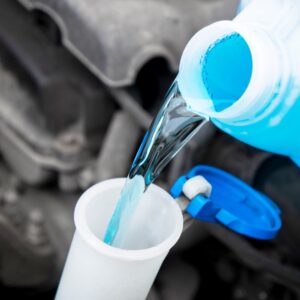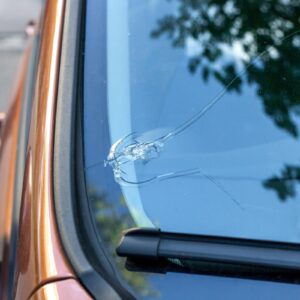A damaged windshield makes driving your vehicle difficult and unsafe. You’ll want to fix the issue as soon as possible. However, you might find yourself torn between repairing the damage to the glass or replacing the part. You’ll waste time and money if you hastily get a replacement for a perfectly repairable windshield. But if the damage proves more severe than it appears, the supposedly fixed windshield might break while you’re on the road.
Knowing the right choice between windshield repair vs. replacement can save you from unnecessary expenses while returning your vehicle to a like-new state.
Choosing Between Windshield Repair vs. Replacement
You can usually determine if your car needs windshield repair or car windshield replacement by looking at the following factors:
- Location of the damage on the windshield
- How many instances of windshield damage are present
- What layers of the windshield are affected/how deep the damage is
- Can you drive immediately after fixing the issue?
- Size of windshield damage
- Type of windshield damage
- The severity of the windshield damage
- The type of glass that makes up the windshield
- Does the damage interfere with safe and easy driving?
Windshield Repair
The following are accurate indicators that your car requires windshield repair but doesn’t need the entire glass replaced:
- The windshield damage isn’t near the edge of the car glass.
- The damage is limited to the outer layer of the windshield glass.
- You can drive your car immediately after the repair job.
- The bullseye chip measures less than an inch across.
- The windshield crack measures less than a few inches in length.
Windshield Replacement
You must replace the windshield if you find one or more of the following indicators:
- The windshield chip or crack exceeds the size of a dollar bill, which measures 6.14 inches in length and 2.61 inches in width.
- The windshield damage formed near the edge of the car glass.
- The damage reaches deep into the inner layer of the windshield glass.
- The damaged windshield doesn’t use laminated glass.
- The windshield damage impairs your ability to see out of the car glass, making it harder to drive your vehicle, especially during bad weather with poor visibility.
- More than one section of the windshield bears signs of damage.
- The fractures have complex or extensive patterns.

What Are the Different Types of Windshield Damage?
Windshield damage comes in different forms. The type of damage will usually determine the severity and the best approach to fixing it.
Surface Pit
Surface pits are chips in the windshield that have removed a minuscule glass fragment. They only penetrate the windshield’s outer layer/tension zone.
Surface pits are roughly as big as a pinhead. You can patch pits with windshield repair resin and UV curing. Unfortunately, car insurance usually won’t cover the cost of surface pit repair because pitting doesn’t fall under the strict definition of a break.
Bullseye Break
A bullseye break is a conical break with a circular impact point. It forms when a small piece of debris kicked by the tires hits the windshield. This type of windshield damage is bigger than a surface pit.
Bullseye breaks are more common occurrences in older vehicles with thicker windshields. Modern windshields have thinner outer layers that break more easily.
A windshield crack repair kit has everything you need to fix a bullseye break. You can even do this repair job yourself.
Half-Moon Break
A half-moon break is effectively half a bullseye break. Instead of a circular impact point, it forms one shaped like the eponymous phase of the moon. Half-moon breaks are similar to chip-type damage, and fixing them is difficult.
Half-moon breaks don’t show up a lot. Most of these breaks form because a stone hit the windshield.
Another type of windshield damage, called a bees-wing break, closely resembles the half-moon break. Bees-wing breaks are far more common and treated the same.
Star Break
A star break gets its name from the shape of its break pattern. Instead of a circular pattern, it has two or more lines emanating from the center of the impact site.
Repairing star breaks takes more time than fixing bullseye breaks. You might need specialized tools to fill each fracture line with windshield repair resin.
Crack/Long Break
A crack refers to a straight line fracture in the windshield. There are two types of cracks–edge cracks and floater cracks.
Edge cracks reach the windshield’s edge. Most cracks are this type. If you have the appropriate tool and windshield repair resin, you can fill edge cracks that are 18 inches or less in length.
Any cracks that don’t reach the windshield’s edge are floater cracks. They’re often chips or stone-breaks that worsened into fractures. Fixing a floater crack takes longer and requires more specialized tools.
Combination Break
Imagine a multi-legged star-break within the circular impact point of the bullseye break. That’s a combination break.
Most combination breaks have crushed glass around their impact point, highlighting how bad they are for the windshield.
If a combination break forms in the area immediately in front of the driver, replace the windshield.
Common Causes of Windshield Damage
It also helps to know the usual suspects in windshield damage so that you can avoid them. Here are the leading causes of chips, cracks, and pits in the windshield glass:
Road Debris Strikes
Road debris refers to objects that shouldn’t appear on the road surface. They include natural objects, such as tree parts and rocks of various sizes, and artificial things like trash.
Some of the debris gets kicked up by spinning tires, especially while driving at high speeds on the highway. Others get flung by other forces, such as strong winds picking up debris or branches snapping and falling from trees. When debris of sufficient size hits the windshield hard enough, it can chip or crack the car’s glass.
The best way to avoid windshield damage from road debris strikes is to put space between your car and other vehicles, especially when traffic moves quickly.
Pitting
A grain of sand or a similarly small particle can’t crack the windshield. However, repeated impacts over time can cause pitting in the surface of the car glass. You won’t notice the surface pits until they cause rainwater to scatter across the windshield, making it more difficult to see out your vehicle.
Snow and Ice
By themselves, snow and ice can’t cause windshield damage. It takes a sufficiently large hailstone moving at a fast enough speed to damage car glass.
However, cold weather can aggravate existing chips and cracks. When glass grows extremely cold, it contracts, only to expand once it gets warmer. Repeated cycles of extreme contraction and expansion can make a break bigger and more severe.
It’s vital to repair or replace a windshield as soon as possible. Otherwise, windshield damage might worsen right when you’re on the road.
Any information provided on this Website is for informational purposes only and is not intended to replace consultation with a professional mechanic. The accuracy and timeliness of the information may change from the time of publication.





























